July 29 – Aug. 4, 2024 – Kingston, Ontario to Campbellford, Ontario, Canada
Highlights this week: Beginning our journey on the Trent-Severn Waterway – a 240-mile long canal route connecting Lake Ontario at Trenton to the Georgian Bay/ Lake Huron at Port Severn. We are two days and 11 locks into our 44-lock journey.
Wednesday, July 31, 2024 – Kingston, Ontario (Confederation Basin Marina) to near Greater Napanee, ON (Hay Bay-Long Reach Anchorage)
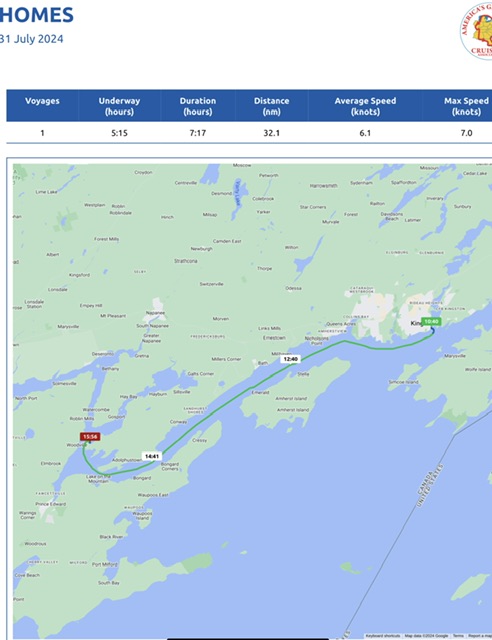
Today, we were underway 5 hours and 15 minutes, going 37 miles (32 nm), at an average speed of 7 MPH (6.1 knots). It was nice getting back to cruising after being in Kingston since last Friday.
Last night, we were treated to dinner and drinks by our Looper friends of Rana VI -Mitch and Shirley, who are from the Kingston area. They are taking their six-month break in order to keep their free health care. They will return to their boat in Florida around December to avoid hurricane season. When they saw us in Kingston on Nebo, they texted us before we could text them. It was so great catching up and sharing stories. They were in our flotilla down the Illinois River and we traveled together until Green Turtle Bay Marina in Grand Rivers, KY. It was great catching up, reminiscing and sharing stories.
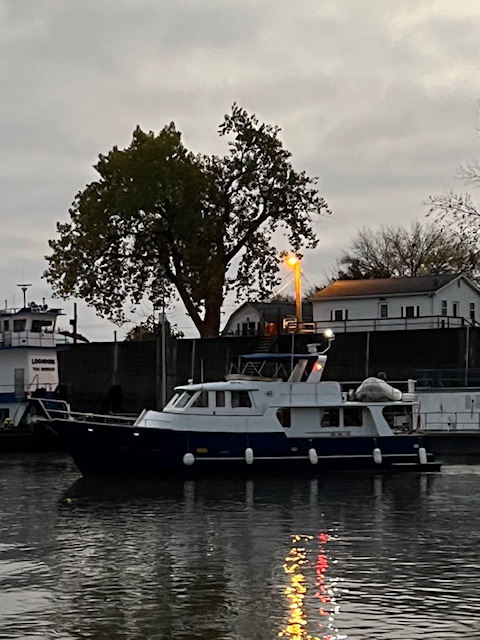

That dinner with Mitch and Shirley wrapped up four days of fun on land. On Saturday, our friends, Robb and Tracy, came for her birthday celebration – which is now the third annual on HOMES. In 2022, we took them though the Dismal Swamp in North Carolina and Virginia; and in 2023, they came to Kelleys Island. This year, we drove to Ottawa, Ontario – Canada’s capital – for a two-day stay and then finished off our four-day adventure back in Kingston on HOMES.
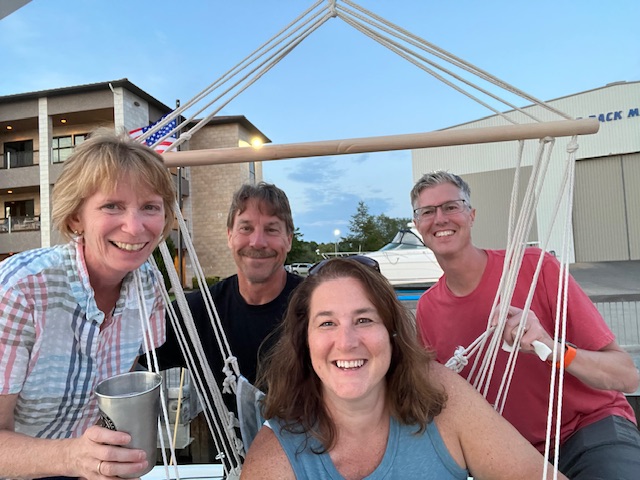
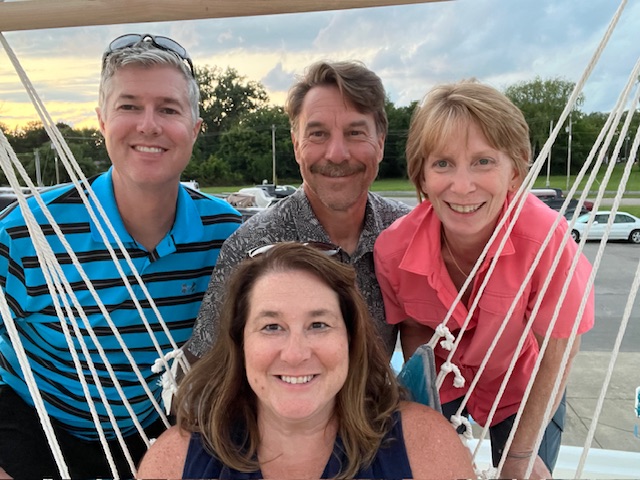
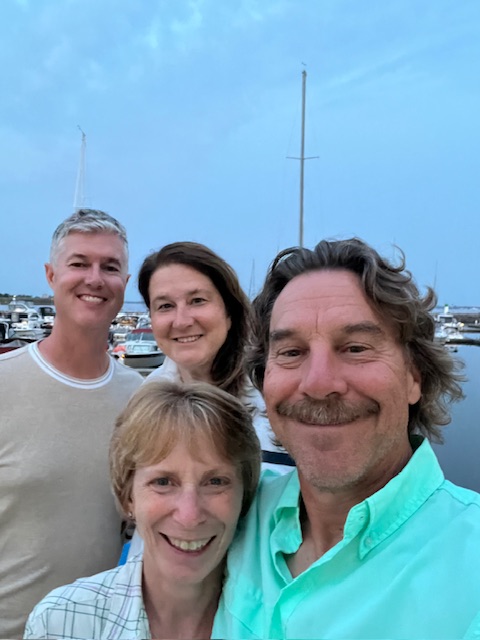
We stayed Saturday and Sunday nights at Fairmont Chateau Laurier. This hotel was commissioned by American railroad magnate Charles Melville Hays, whose Grand Trunk Railroad was quickly expanding throughout western Canada in the late 1800s and he envisioned his railroad extending all the way to British Columbia on the Pacific Coast. To entice people to travel on his railroad, he needed deluxe accommodations at destinations along his line. The Chateau Laurier was to be his showcase. Unfortunately, Hays died aboard the Titanic, delaying the opening of the hotel was from April of 1912 to June of 1912. Not only did Hays parish, but much of the hotel furniture and furnishings went down with the Titanic. The hotel has hosted many important guests from rock stars, movie stars, Royals and political leaders. However, we didn’t see anyone famous.


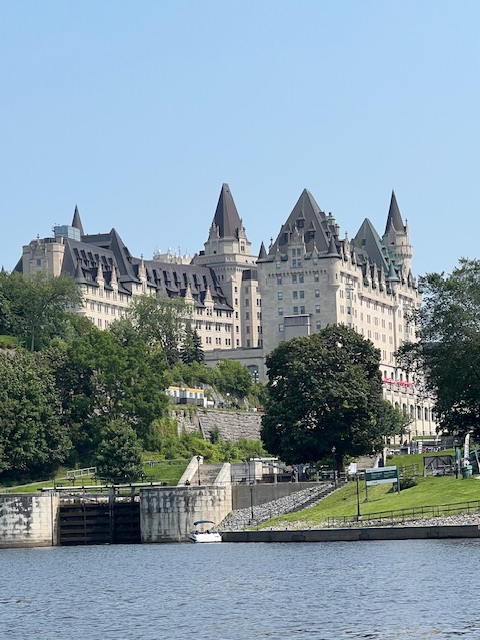
During our stay, we had Afternoon Tea, with blueberry and regular scones, accompanied with mascarpone cream and strawberry jam, five savory finger sandwiches and six sweet desserts. We each chose a different tea from a selection of 35 tea options. Despite being hungry after a full morning of sightseeing, we were stuffed by the time we ate our way through the three tiers.
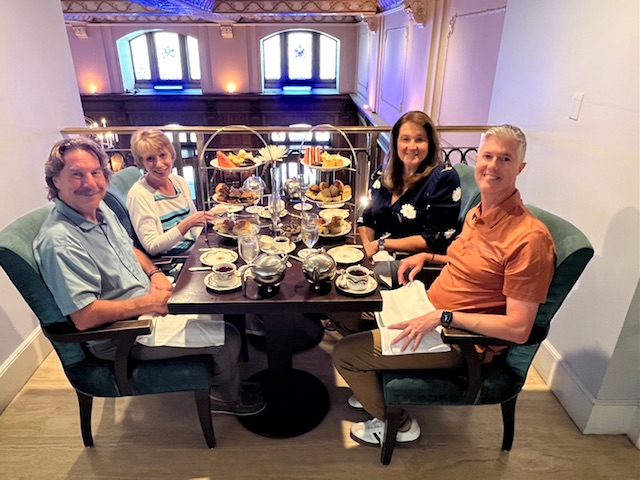
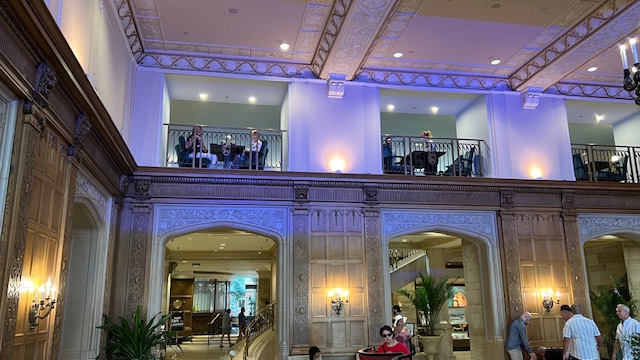
Running along side the Fairmont Chateau Laurier is the Rideau Canal. This 125-mile canal, connecting Kingston on Lake Ontario to Ottawa on the Ottawa River, is too shallow for HOMES to traverse, so it was nice to get to see the famous staircase locks. This canal was opened in 1832 and came about as a strategy to keep the United States at bay. After the War of 1812, information was received that the United States planned to invade the British colony of Upper Canada. This canal would keep the supply lines running within Canada.
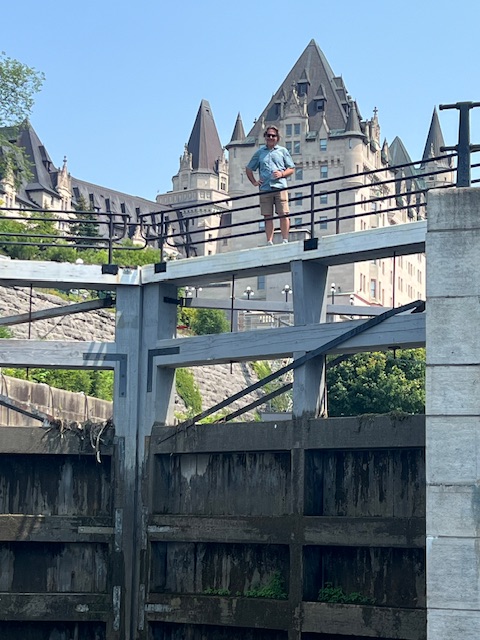
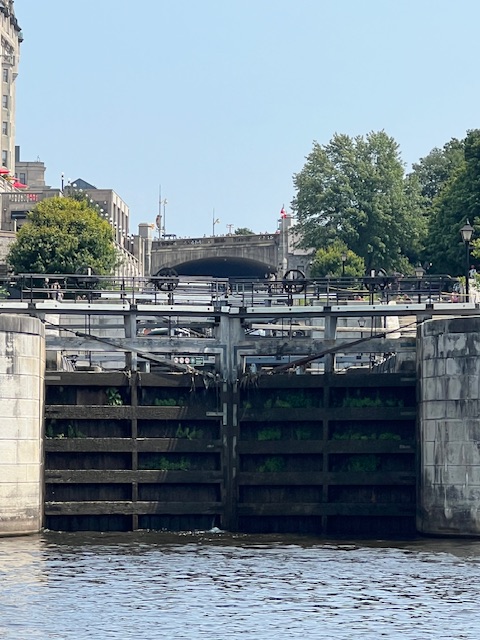
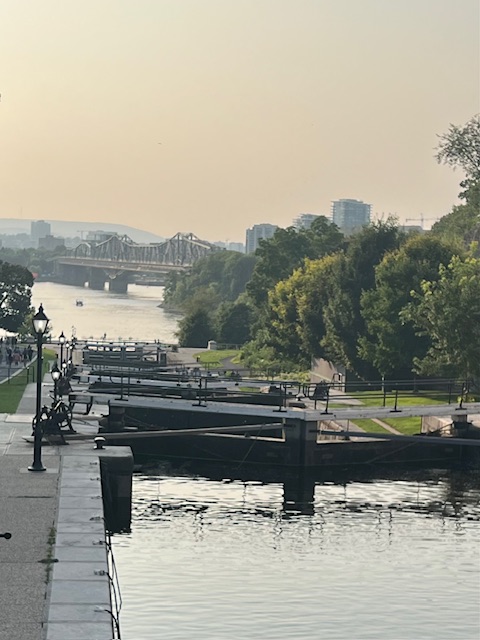
Upper Canada (Quebec) and Lower Canada (Ontario) was united in 1841, but the capital moved around to multiple cities. In 1857 Queen Victoria was called upon to help choose a permanent location. She chose Ottawa for its defensible location.
Until the American Civil War, the individual provinces did most of their own governing. However, with the outbreak of the American Civil War, Canadians decided they needed to unite for fear of retribution for Britain’s support of the Confederacy. Therefore, from 1864 to 1867, representatives of Nova Scotia, New Brunswick, Ontario and Quebec, with British support, worked together to establish a new country – the Dominion of Canada, within the British Commonwealth. By the 1960s, the word “Dominion” was dropped. The last holdout was the name for Canada’s unity day on July 1st. Finally in 1982, Canada’s “Dominion Day” until officially changed to “Canada Day.” Today, Canada is made up of 10 provinces (Alberta, British Columbia, Manitoba, New Brunswick, Newfoundland and Labrador, Nova Scotia, Ontario, Prince Edward Island, Quebec and Saskatchewan) and three territories (Yukon, Nunavut and Northwest Territories).
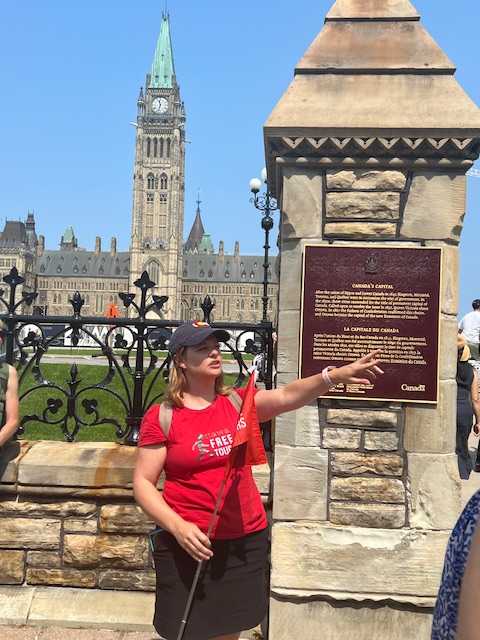
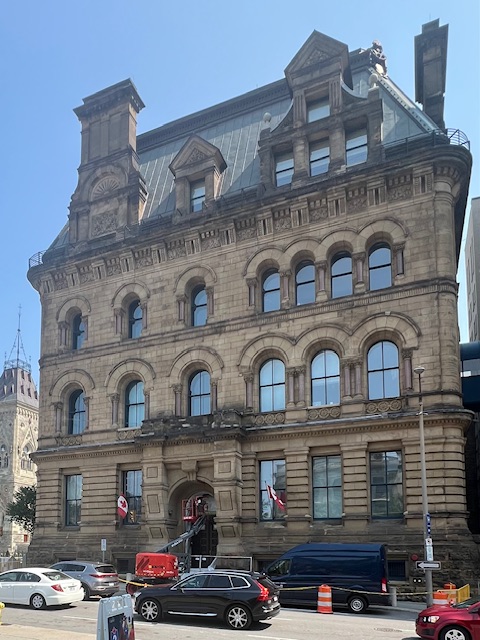
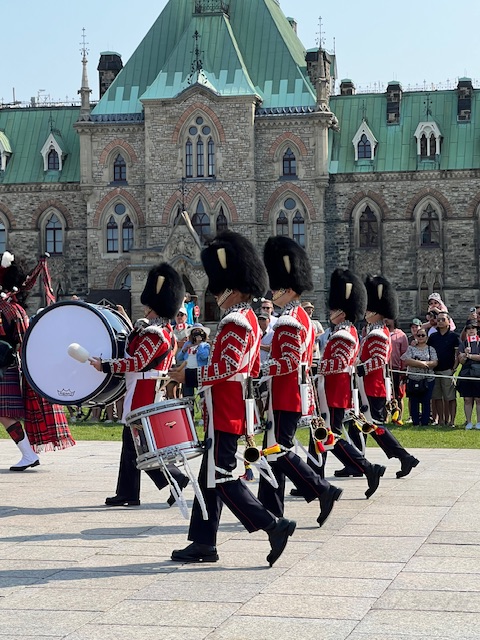
We took a free two-hour tour of the city and did some exploring on our own.
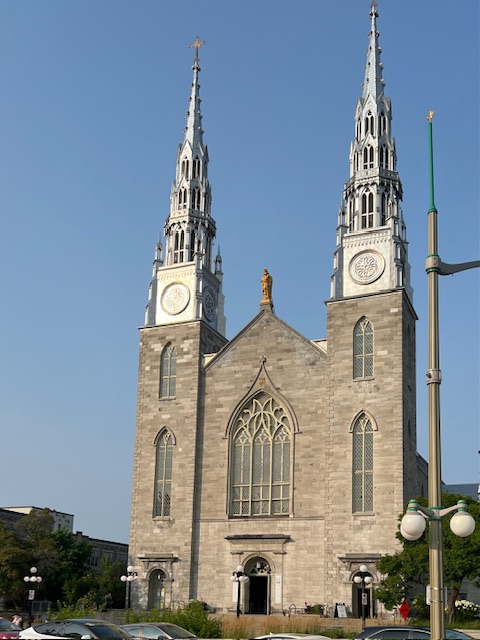
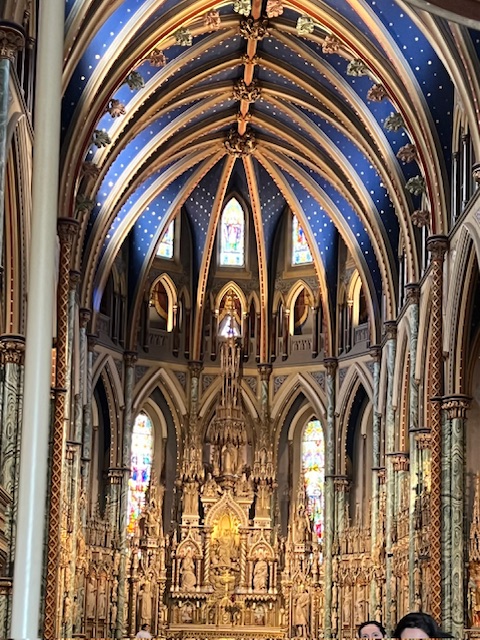
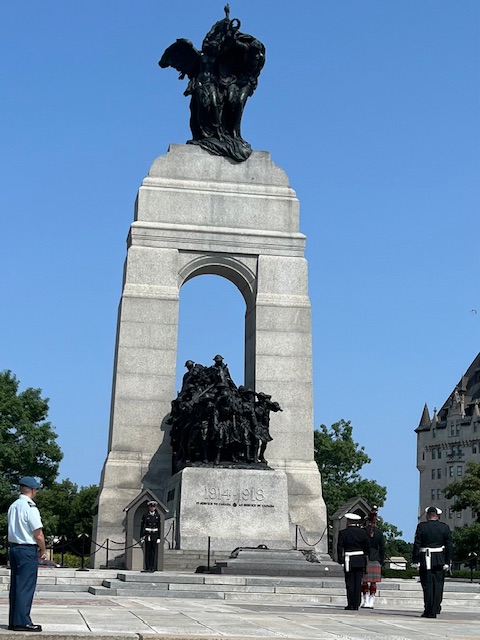
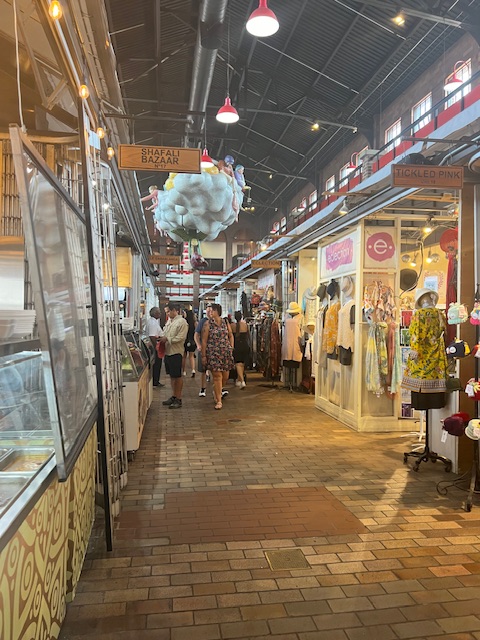
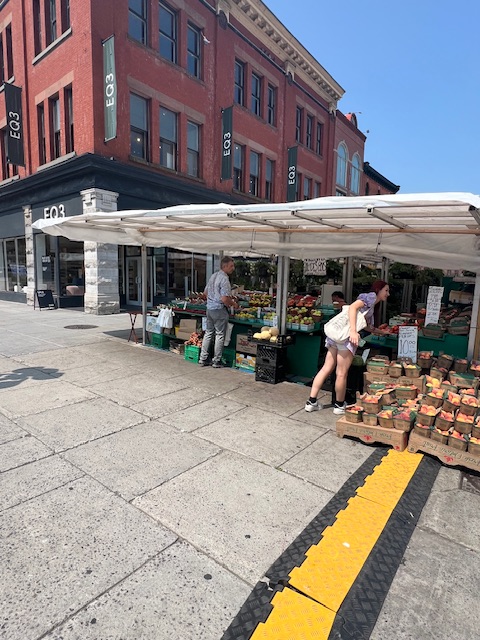
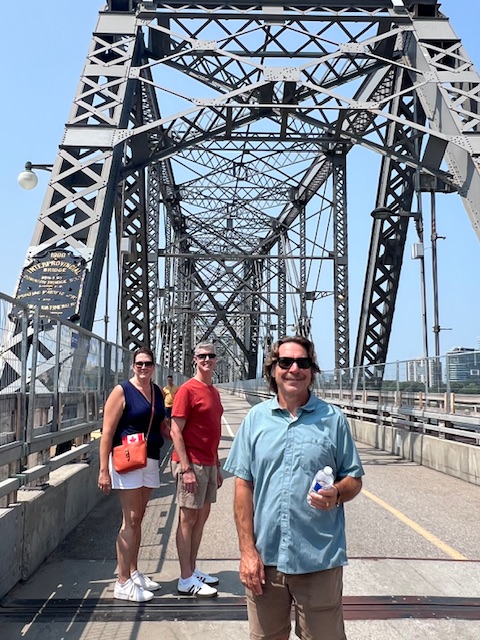
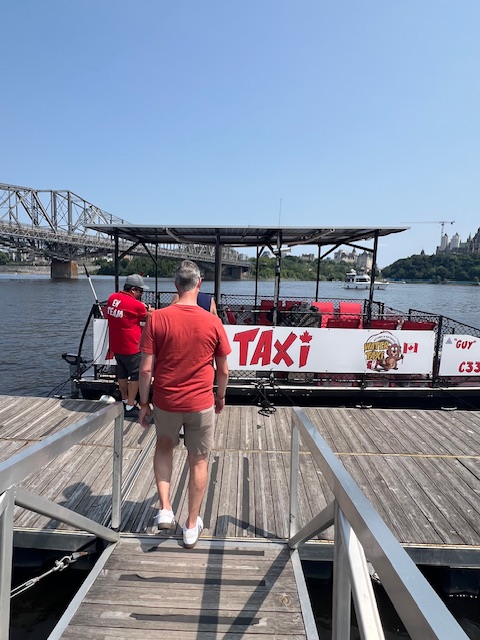
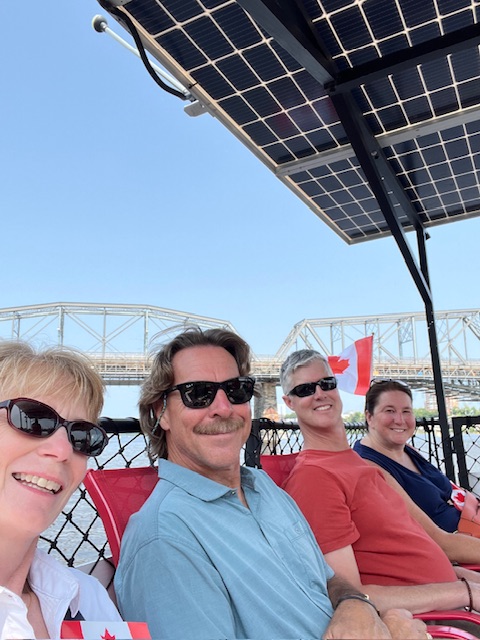
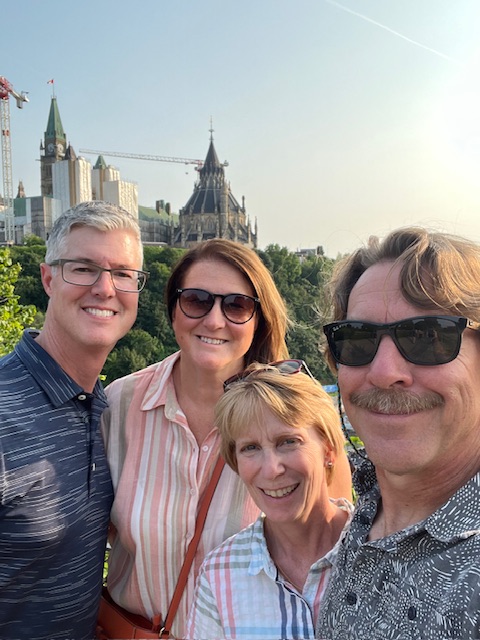
On our drive back to Kingston, we stopped at Brockville, Ontario to see Canada’s first railway tunnel. Bockville is located on the north shore of the St. Lawrence River in the Thousand Islands. This area of Ontario was first settled by English speakers in 1784, when thousands of American refugees arrived from the American colonies after the American Revolutionary War and were called Untied Empire Loyalists because of their continued allegiance to King George III. The 1,730-foot railway tunnel was dug under Downtown Brockville between 1854 and 1860 to provide a rail link from timber trade of the Ottawa Valley to the Brockville port. It also became a stop for the Grand Trunk Railway. The tunnel was used until the mid-1970s.
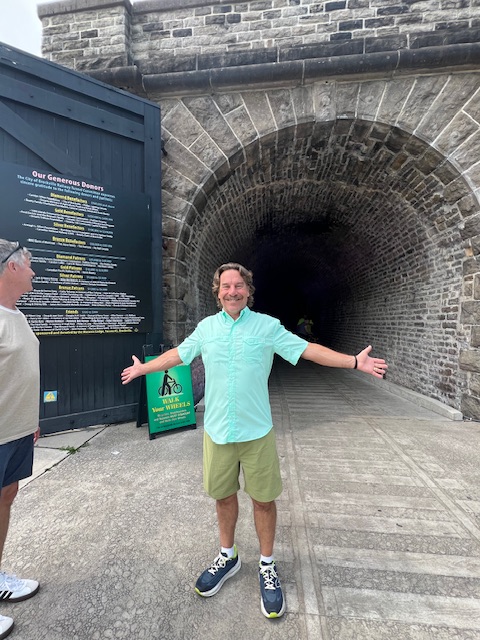
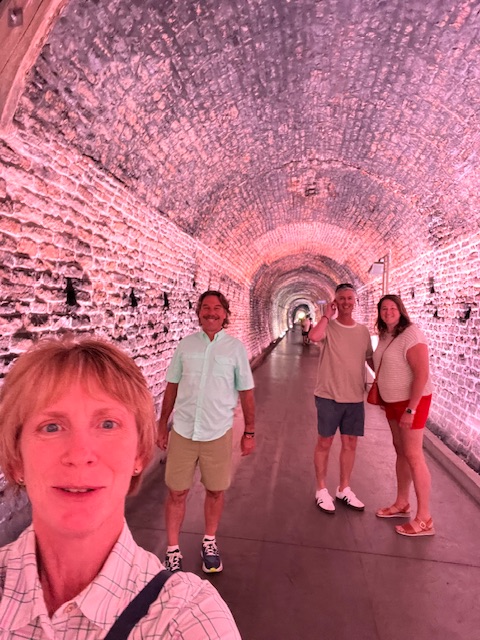
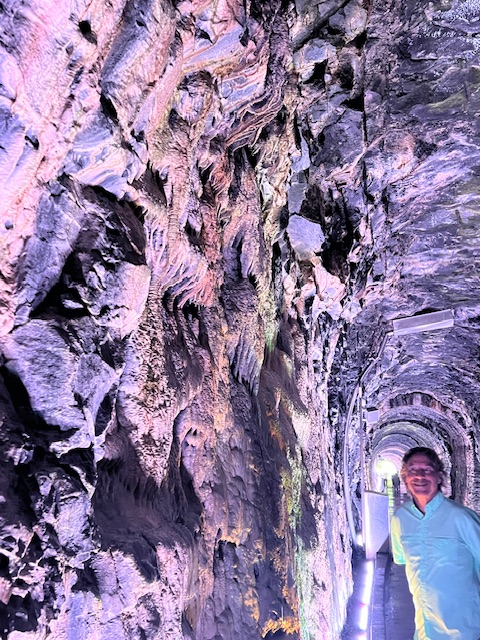
After all of that excitement over the last four days, our voyage today was uneventful, ending at a peaceful anchorage.

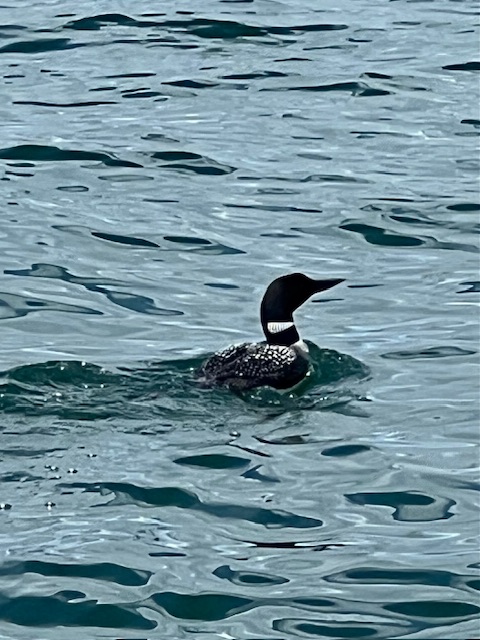
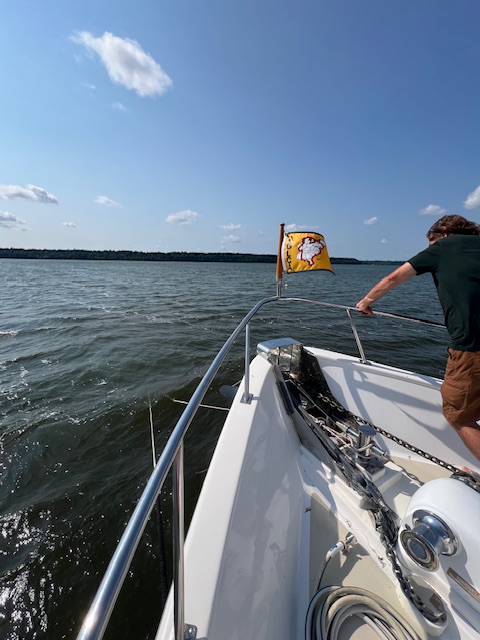
Thursday, August 1, 2024 – Near Greater Napanee, ON (Hay Bay-Long Reach Anchorage) to Trenton, ON (Trent Port Marina)
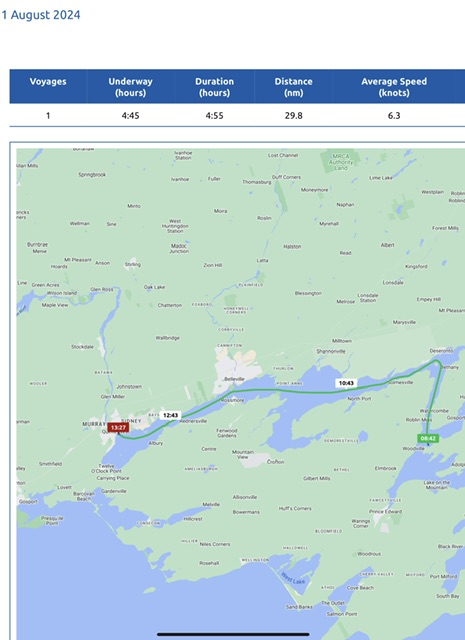
Today, we were underway 4 hours and 45 minutes, going 34 miles (29.8 nm), at an average speed of 7.2 MPH (6.3 knots). After a restful night, we pulled up a relatively clean anchor and were on our way to Trenton.
Today was an uneventful cruise, traveling further up into Canada. We will be staying two days at Trent Port Marina, so that we can provision before heading into the Trent-Severn Waterway.
The AGLCA Harbor Hosts were so kind to take pictures of us coming into the marina. They also emailed lots of information to us about the Trent-Severn locks.
Trenton is known as the “Gateway to the Trent-Severn Waterway.” In 1615, Samuel de Champlain traveled this network of inland waters with the Hurons. However, between 1830 and 1920, this route had an addition of roughly 20 miles of man-made canals to make the Trent-Severn Waterway navigable to commercial boats. Unfortunately, by the time the Trent-Severn canal route was completed in 1920, rail and road transportation had already made it obsolete as a commercial route. However, like the Erie Canal, The Trent-Severn is important for so many reasons: tourism, water source for nearby municipalities, hydroelectric power and wildlife havens.

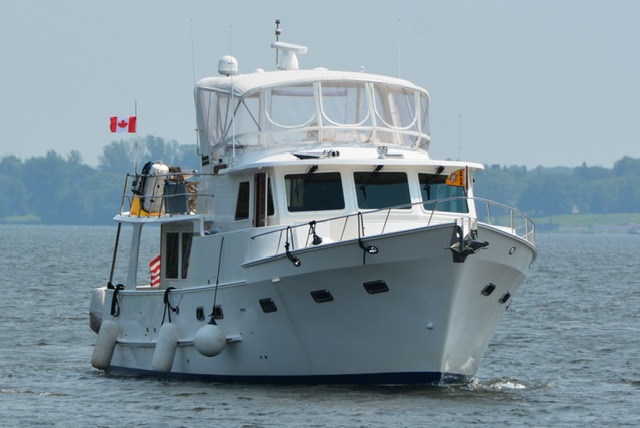
On Friday morning, we took the dinghy up to Lock #1 to purchase our passes to travel the Trent-Severn Waterway. One pass gives us one-way lockage through all 240-miles and 42 locks and the second pass gives us mooring at all of the parks and lock walls. The combined passes cost $610.00 (U.S.). In addition to buying our passes, we enjoyed talking with the lock tender and seeing how the locks work.
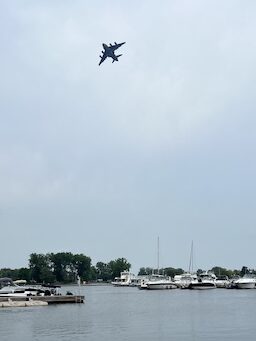
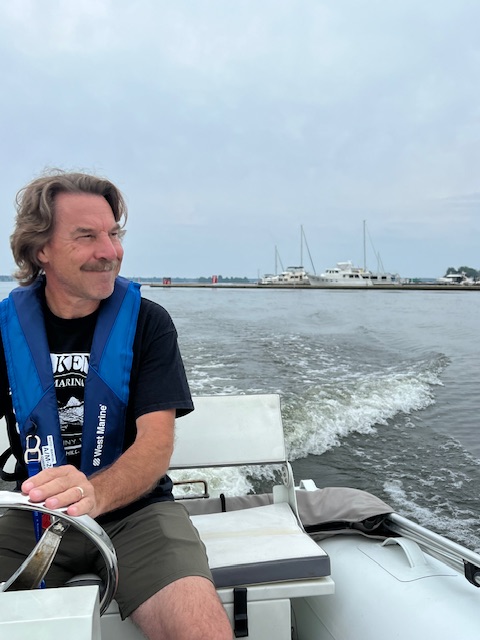
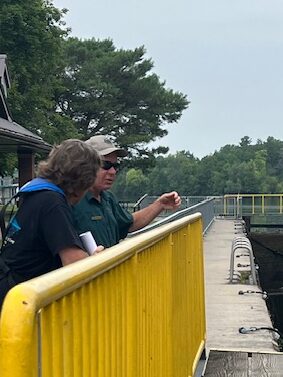
After leaving Lock #1, we moored the dinghy across the Trent River to go to the Beer Store. You had to go up to a window and order what you want and then it came out on a conveyor belt. The store also had bottle and can returns. In Canada, you pay a $0.10/can or bottle and when you bring them back you get a refund or credit.
As we were taking the dinghy back over to HOMES, we got waved over by Ontario Provincial Police (OPP). They just wanted to make sure we had all of our safety equipment. After we passed, they chatted with us for awhile about our trip.
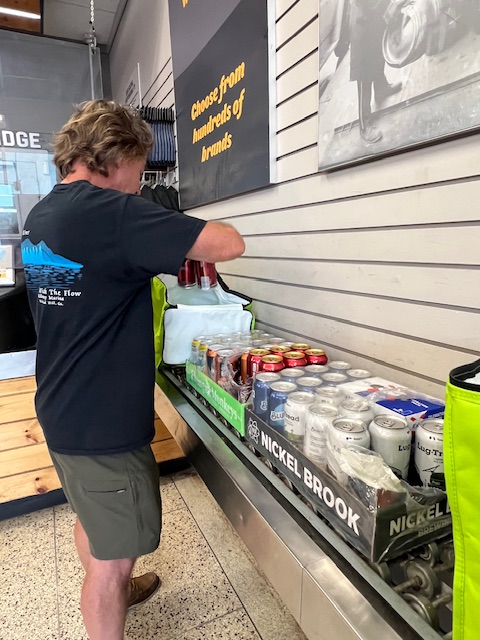
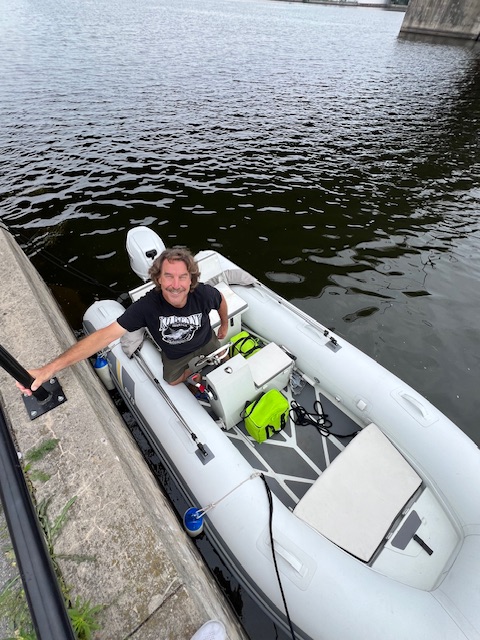
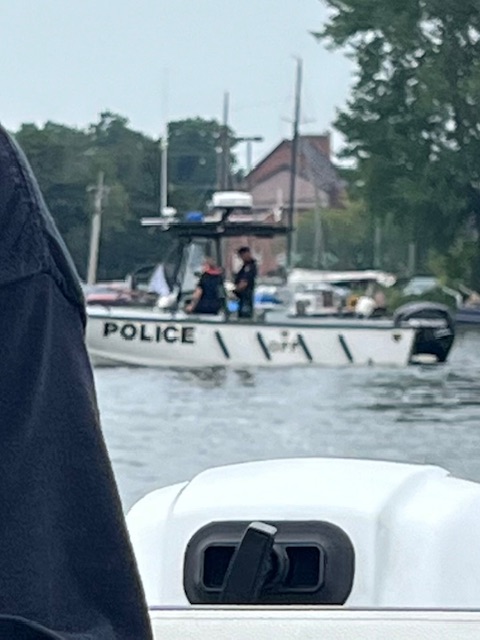
We wrapped up our stay in Trenton by grocery shopping and getting Tim a haircut.


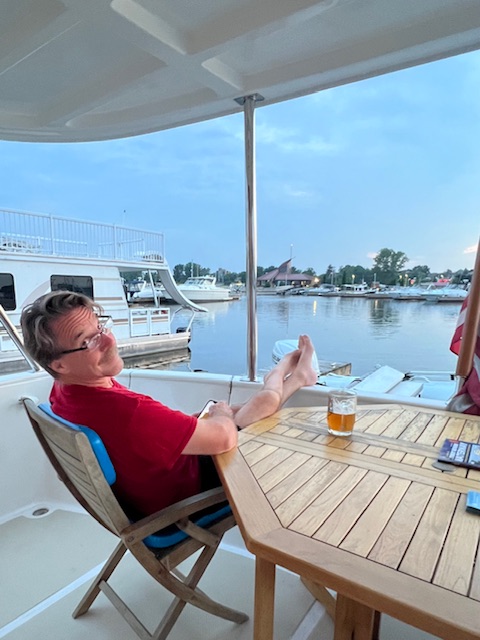
Saturday, August 3, 2024 – Trenton, ON (Trent Port Marina) to Lock # 8 (Mooring at Upper Lock Wall)
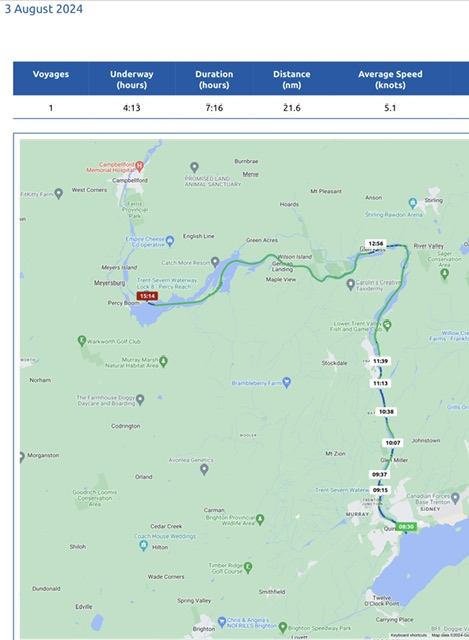
Today, we were underway 4 hours and 13 minutes, going 25 miles (21.6 nm), at an average speed of 5.9 MPH (5.1 knots). Completing 8 locks added about 3 hours to our voyage, for a total duration of 7 hours and 16 minutes.
The Trent-Severn was not busy today! We didn’t wait for one lock, and we only shared a lock once, with a guy and his dog in a little dinghy. In June and July we could have been waiting in line for hours at each lock. An average of 120,000 boats lock through annually. There is a blue line painted on the lock landing where you are to moor up and wait your turn. However, we cruised into each of the 8 locks today without stopping. Luckily the holiday weekend didn’t make the locks busy. The first Monday in August is Civic Holiday, with many Canadians having the day off work. It is not a federally mandated holiday, so the locks and most stores are still open.
Before leaving the marina this morning, Tim put more fenders on HOMES to put her “lock mode.” We then cruised over to the pump-out dock. In the U.S., pump outs are either free with dockage or have a small fee. In Canada, there is always a fee. We paid $24.67 (U.S). Once that was done, we headed out under the “Gateway” sign. The AGLCA Harbor Hosts took a great picture of us beginning our journey of the Trent-Severn Waterway!
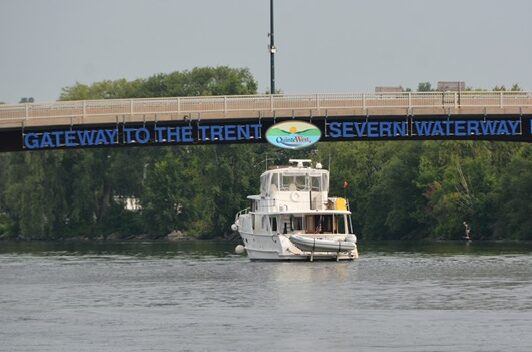
This was the beginning of our voyage of this 240 mile waterway, with 44 locks – 37 traditional locks, 2 hydraulic lift locks, 2 flight locks and 1 marine railroad! The 8 eight locks today were traditional locks, but tomorrow, we will go through 1 of the 2 flight locks.
As we approached Lock #1, the narrow canal split off from the Trent River. We could see the open lock gates and proceeded into the lock. The lock tender from yesterday waved as we cruised in. This lock, like the other 7 that we are doing today are traditional locks. They are 154’ long, 32’ wide, with lifts from 9.8 feet to 27 feet.
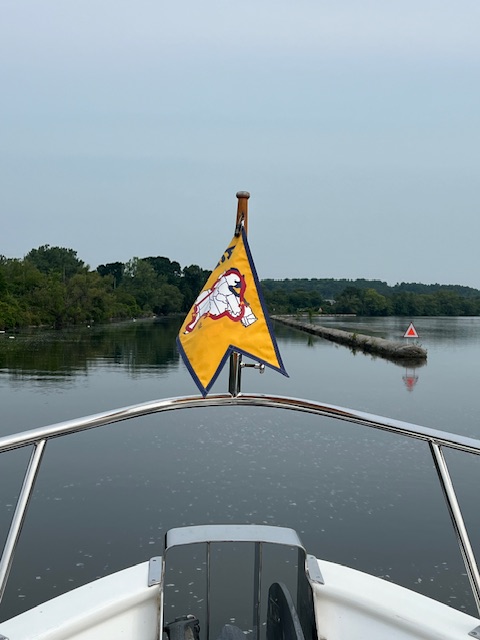
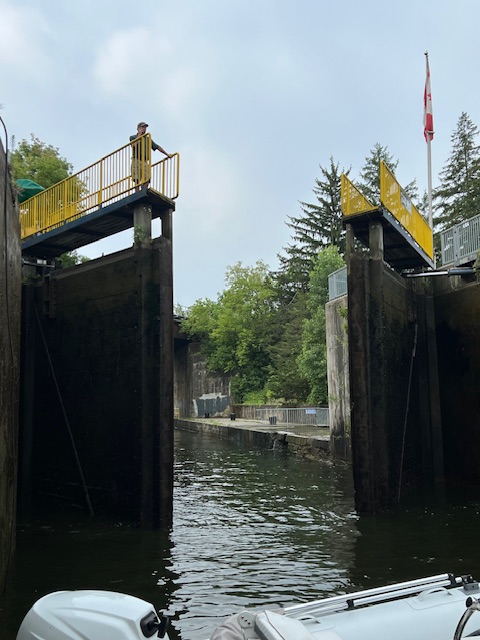
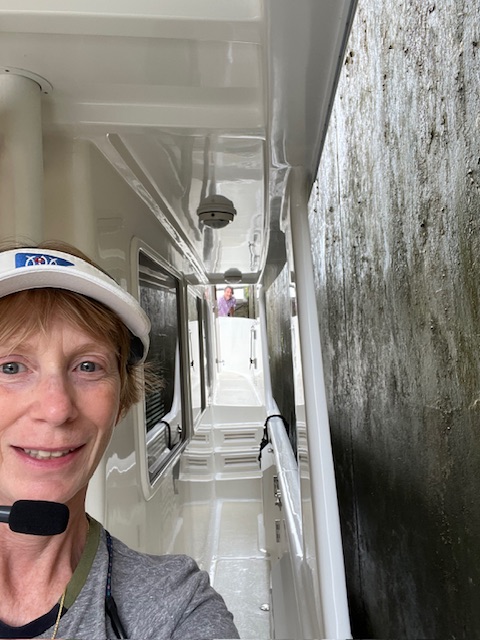
While these are “traditional” locks for this canal, they look different to us. The 8 locks today are still manually operated, which means the two lock tenders push a turnstile around to open and close the gates and valves. There is a turnstile on each side and at both ends of the lock.
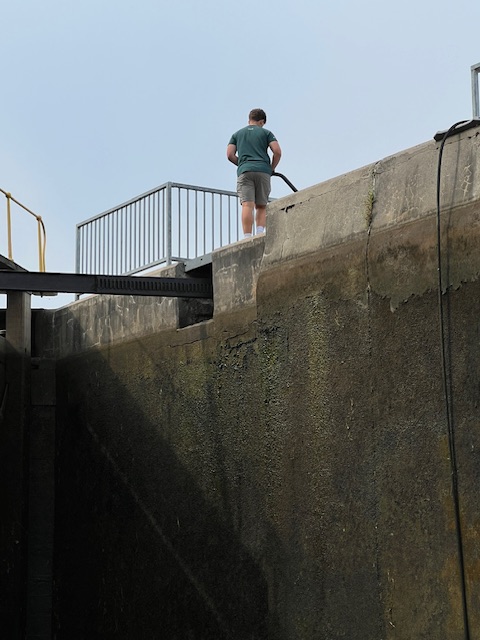
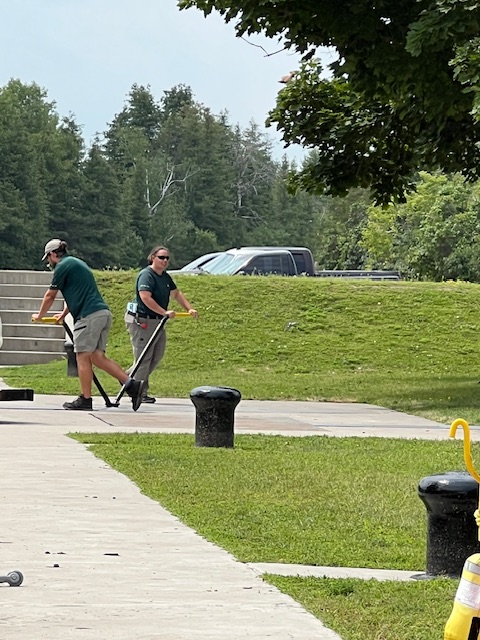
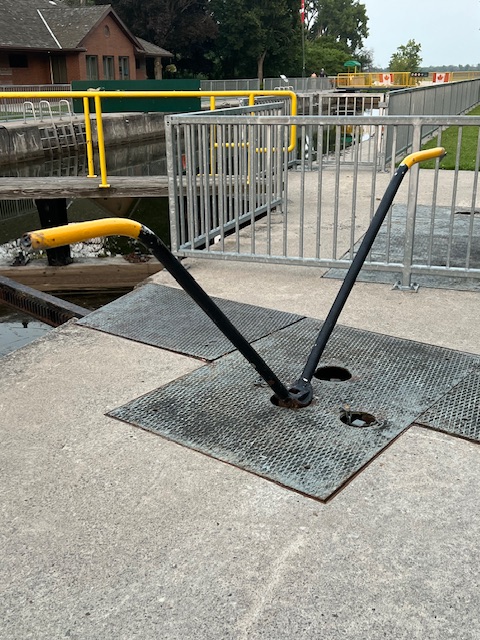
We had one mishap today in Lock #2. We didn’t notice that the blue fender got stuck behind one of the lock lines and when Tim thrusted over it broke, but still kept us held to the lock wall. Quickly, I unfastened the fender on the inside of the boat and the lock tender freed it from behind the lock line. No harm done, except for destroying the fender. Tim didn’t like that blue fender anyway. 😁

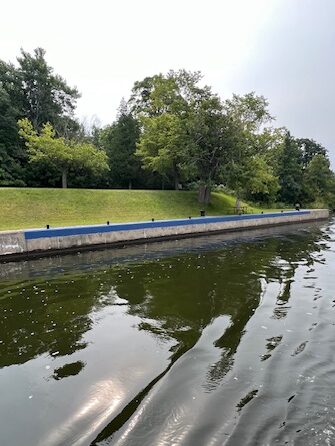
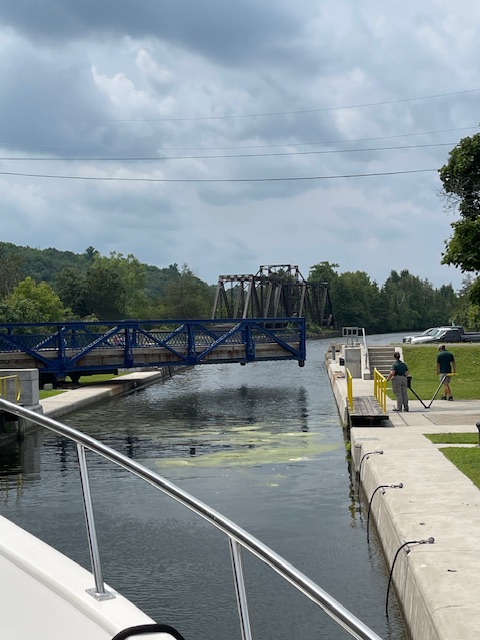
When we got to the top of Lock #8, we cruised out and moored on the lock landing. This landing is more like a park than some of the other landings. There are some camp sites at the bottom of the lock and a shower house next to the lock. It was a beautiful evening!
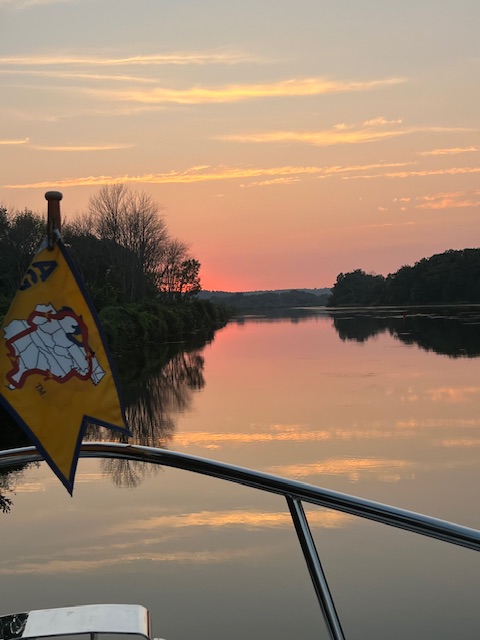
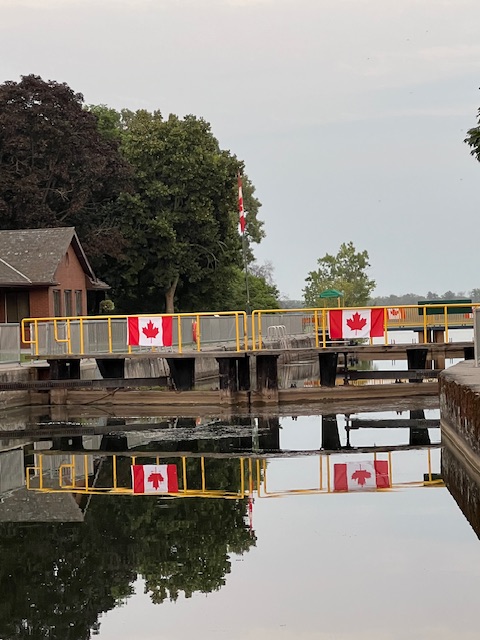
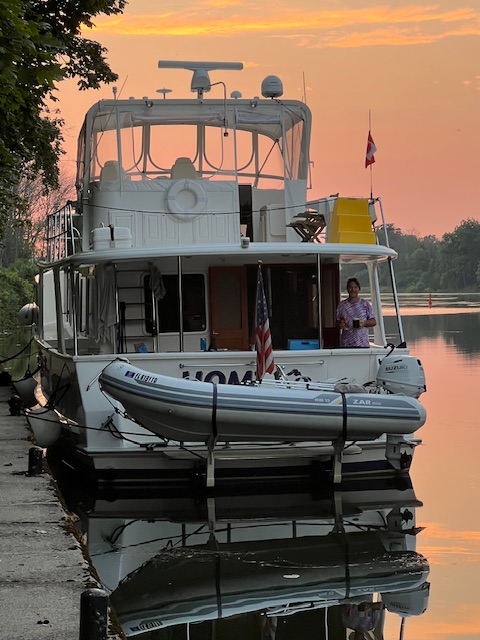
August 4, 2024 – Lock #8 (Mooring at Upper Lock Wall to Campbellford, Ontario (Old Mill Park/ Campbellford Town Dock)
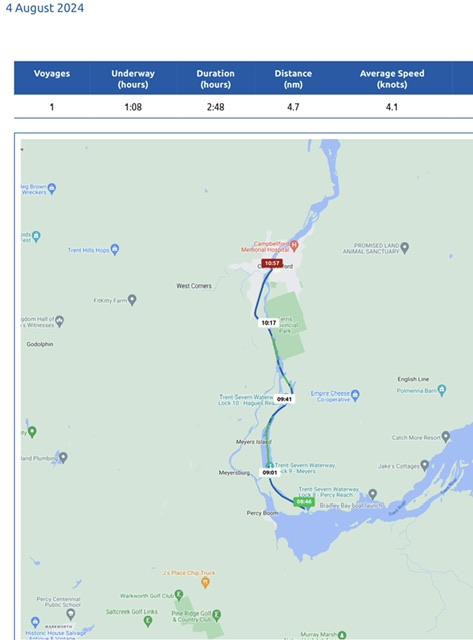
Today, we were only underway 1 hours and 8 minutes, going 5.4 miles (4.7 nm), going 4.7 MPH (4.1 knots) – just when you thought that we couldn’t possibly travel any slower! 😁 We completed 3 locks, so the duration of our trip was 2 hours and 48 minutes.
Our first lock – Lock #9 – was another traditional lock. It lifted us up 16 feet.
Lock #10 was one of the traditional locks that has been modernized to use hydraulics instead of turnstiles. This lock lifted us 24 feet.
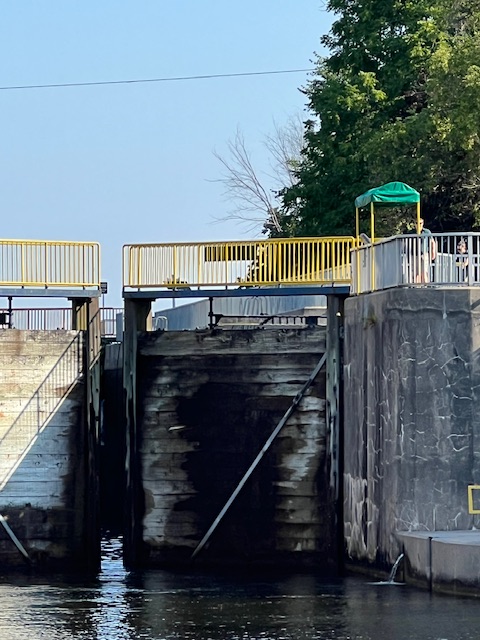
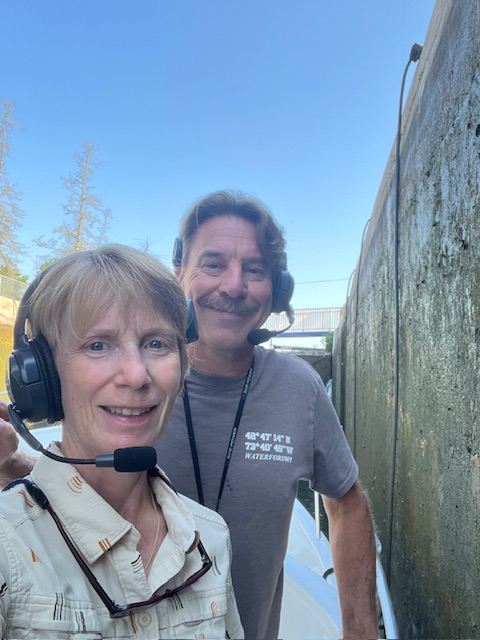
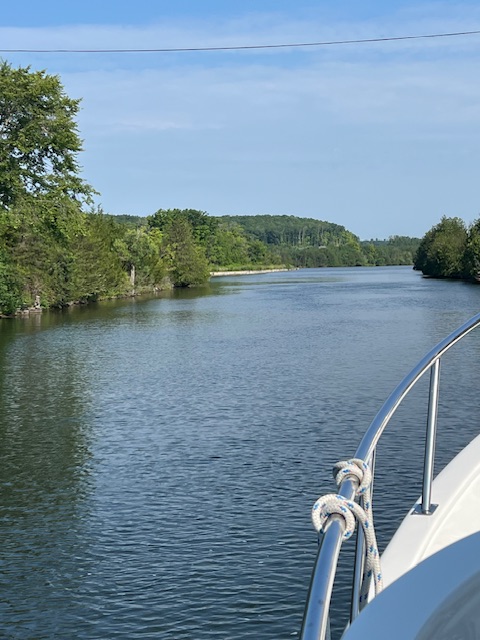
Locks #11-#12 were our first set of flights. A “flight” of locks share a lock gate – so as you exit one lock you immediately enter the next lock. We have only completed one other flight of locks and that was the “Flight of Five” at Lockport, NY on the Erie Canal. So, this was exciting for us, even if it was only a “Flight of Two.” These two locks together lifted us 48 feet!
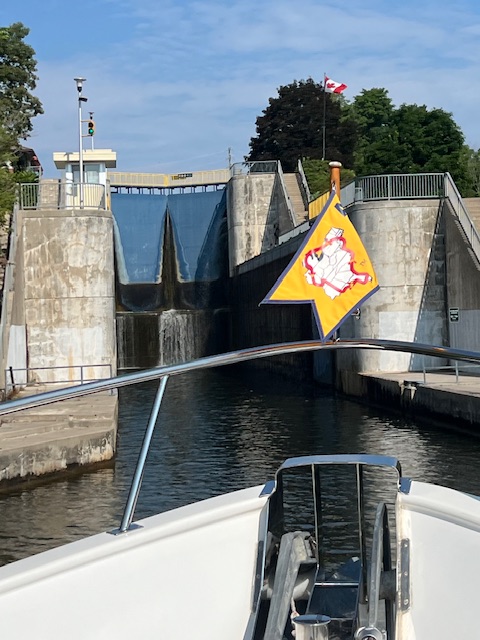
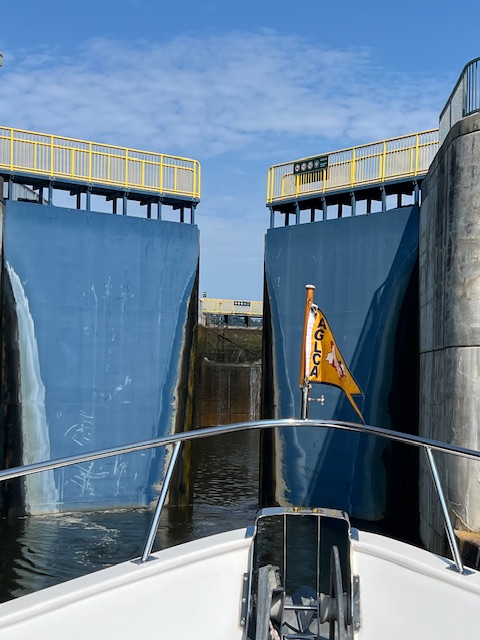
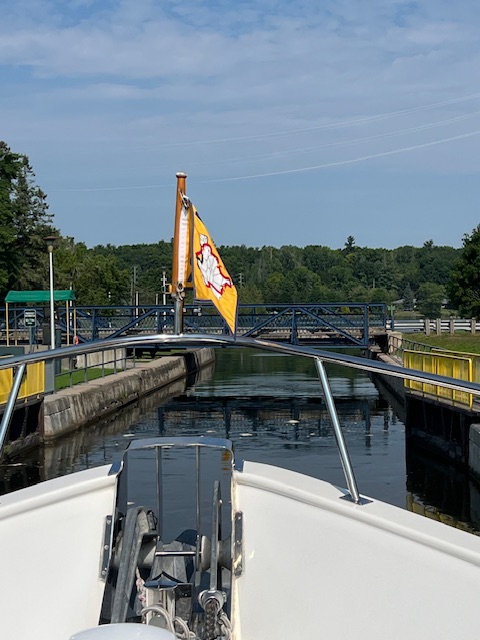
With all of our lock competed for today, we cruised into Campbellford, ON. We are on the town wall, so there is a charge of $90.00 U.S. to stay on this wall. However, we have water, electric and a fun town to explore. We are going to stay two days, since we want to hike back to the falls that Locks 11-12 took us around. There is also a pedestrian suspension bridge. So, those will all be things to explore tomorrow.
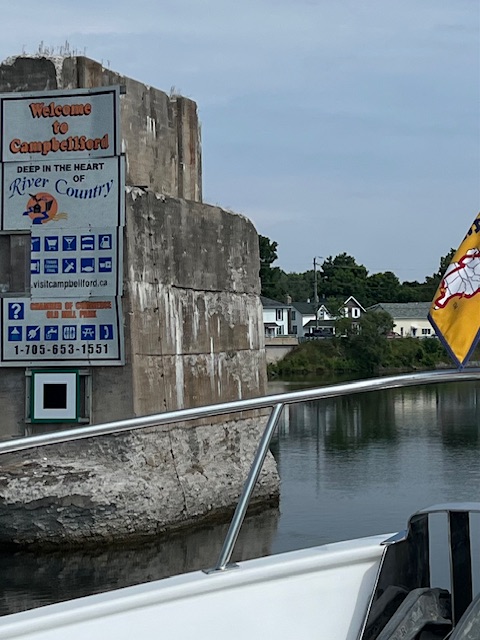

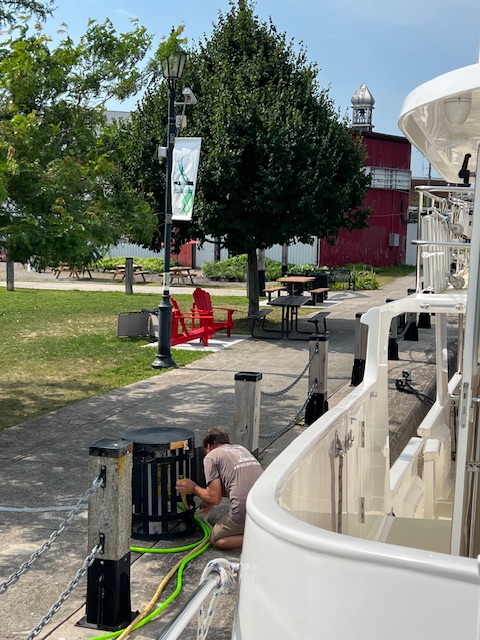
We will catch back up with you next week with our experiences in the “unusual” locks on the Trent-Severn Waterway.
Thanks for reading!